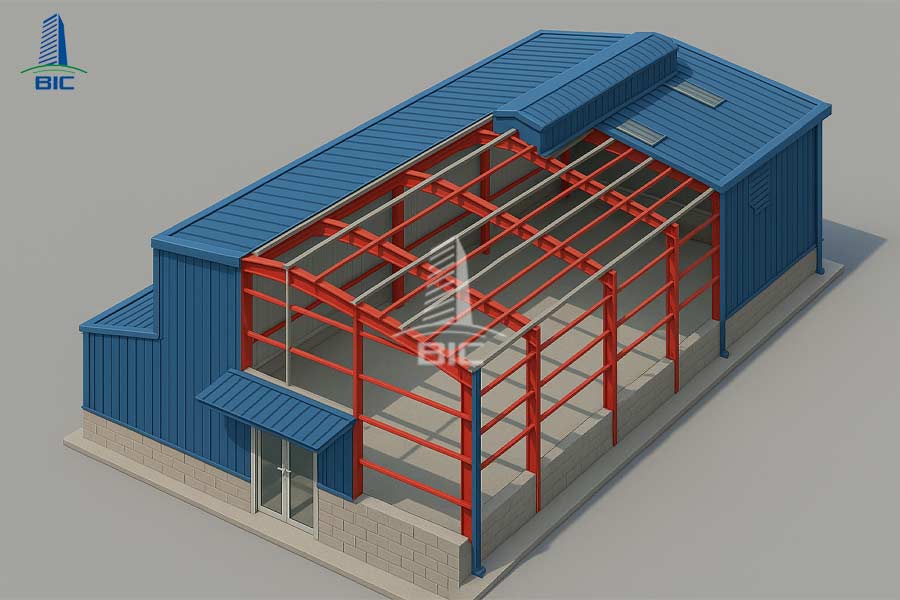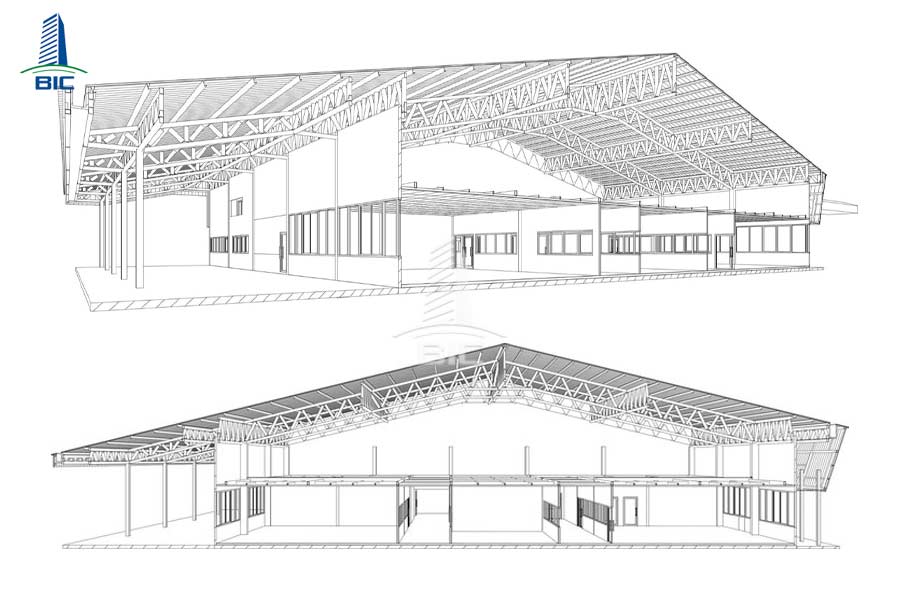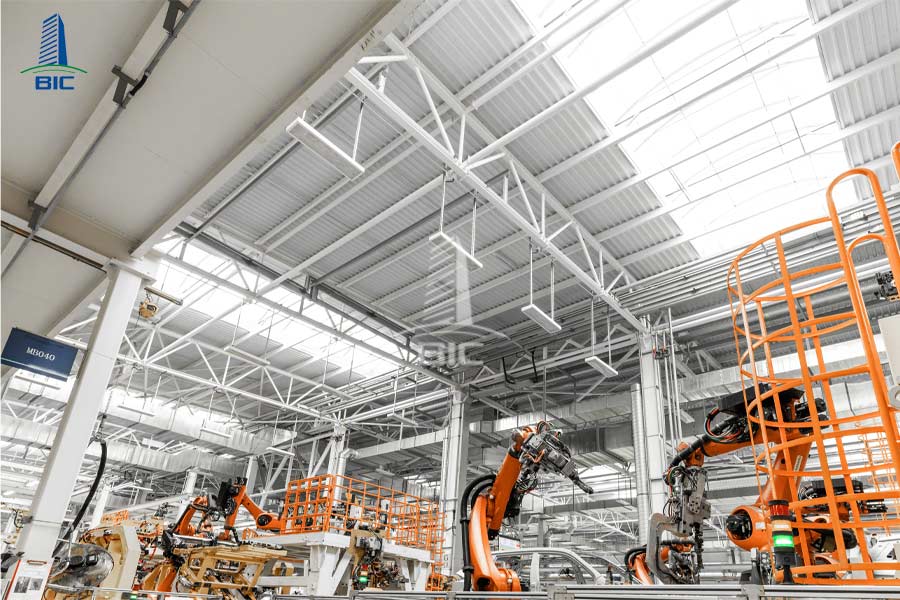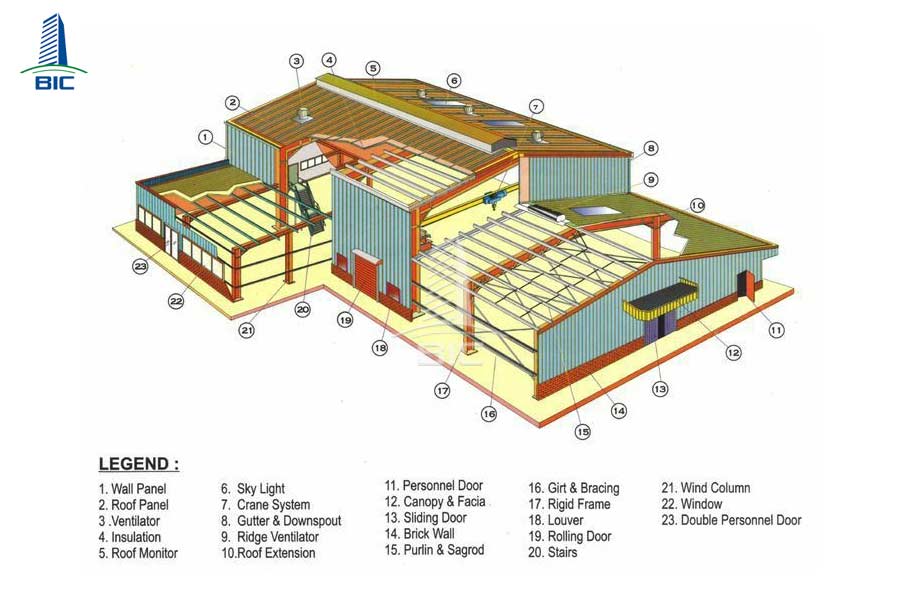
How many factory design standards are there? This is a question many businesses ask when preparing to launch a project for building production facilities, warehouses, or processing plants. In reality, factory design is not simply about drafting blueprints or erecting steel frames—it also requires strict adherence to technical standards, safety regulations, fire protection, environmental protection, and industry-specific codes. Understanding these standards not only helps ensure legal compliance and reduce operational risks but also contributes to long-term investment efficiency.
In this article, BIC will explore in detail how many factory design standards exist today, categorizing them into specific groups, updating the latest regulations, and highlighting important notes for application. This is essential information for any investor, manufacturing business owner, or factory design construction unit.
Factory design is a specialized field that requires the simultaneous application of numerous technical standards and legal regulations. However, many businesses still wonder how many construction standards they need to follow and whether there is a fixed set of standards.
In reality, there is no definitive number that applies to all factory projects, as the number of standards depends on:
- The industry sector.
- Type of factory (pre-engineered steel, concrete, cold storage, chemical plant, etc.).
- Geographic location and climate conditions.
- Scale of the facility.
- Specific requirements for safety, fire protection, and the environment.
Typically, a standard production facility in Vietnam must comply with at least 30 to 50 standards across various categories, including national standards (TCVN, QCVN), international standards (ISO, GMP, HACCP, etc.), industry-specific standards, and local regulations.

These form the foundation for ensuring functional layout, floor plan arrangement, height, ventilation, lighting, water supply and drainage, and other basic operational factors.
- TCVN 3985:2009 – Industrial buildings – Basic design principles.
Defines general principles for industrial factory layout, movement flows, height, area, and safety distances.
- TCVN 4513:1988 – Internal water supply for buildings.
Covers water supply systems for domestic and production use within the factory.
- TCVN 2622:1995 – Fire safety for buildings.
General fire protection requirements in factory design.
These ensure the durability and load-bearing capacity of the factory throughout its lifecycle.
- TCVN 5574:2018 – Concrete and reinforced concrete structures.
Design standards for reinforced concrete structures in factories.
- TCVN 2737:1995 – Loads and impacts.
Specifies static and dynamic loads, wind, and storm impacts on factories.
- TCVN 5575:2012 – Steel structures – Design standards.
Applied to pre-engineered steel frame factory buildings.

Fire protection standards are mandatory and critical for ensuring human safety, asset protection, and minimizing loss in case of fire or explosion.
- QCVN 06:2022/BXD – National technical regulations on fire safety.
Mandatory requirements for fire protection systems, emergency exits, alarms, and firefighting equipment.
- TCVN 3890:2009 – Firefighting equipment for buildings.
Standards for extinguishers, hoses, and emergency exits.
Production always generates emissions, wastewater, noise, etc., so strict environmental standards must be followed:
- QCVN 40:2011/BTNMT – Industrial wastewater.
Limits on factory wastewater discharge into the environment.
- QCVN 19:2009/BTNMT – Emissions from steel production.
Applies to steel plants, mechanical, and metallurgical industries.
- TCVN 6994:2001 – Ventilation systems – Industrial hygiene and safety.
Ensures proper treatment of exhaust and toxic gases inside factories.
These standards ensure a safe working environment for employees and prevent workplace accidents.
- TCVN 2290:1978 – General factory safety.
General safety requirements during production operations.
- TCVN 3148:1979 – Natural lighting in factory design.
Ensures sufficient natural light combined with artificial lighting.
- TCVN 3254:1989 – General fire and explosion prevention safety.

- GMP (Good Manufacturing Practices) – For pharmaceutical and food factories.
- ISO 9001 – Quality management.
- ISO 14001 – Environmental management.
- ISO 45001 – Occupational health and safety.
- HACCP – Hazard Analysis and Critical Control Points (applied in food and beverage industries).
|
No. |
Standard Code |
Application Field |
Notes |
|
1 |
TCVN 3985:2009 |
Industrial factory design |
Basic principles |
|
2 |
TCVN 5575:2012 |
Steel structures |
For steel frame factories |
|
3 |
TCVN 2622:1995 |
Fire protection |
Fire safety regulations |
|
4 |
QCVN 06:2022/BXD |
National fire safety code |
Mandatory |
|
5 |
QCVN 40:2011/BTNMT |
Industrial wastewater treatment |
Required before discharge |
|
6 |
ISO 9001 |
Production quality management |
For export-oriented factories |
|
7 |
GMP |
Pharmaceutical, food factories |
Good Manufacturing Practices |
|
… |
… |
… |
… |
Note: Depending on the industry, businesses may need to apply additional specialized or more stringent international standards.

- Stay updated with the latest standards: Some areas like fire protection and the environment are subject to changes based on new decrees and circulars.
- Apply consistently to avoid overlap: Use a professional consulting unit to synthesize standards appropriate for the actual project, preventing errors and cost overruns.
- Calculate infrastructure investment costs early: Investing properly during the design phase helps reduce future operating, repair, and maintenance costs.
- Adopt international standards for export orientation: International-standard factories help businesses access global markets more easily.
Through the detailed analysis above, it is clear that factory design is a field requiring a high level of standard compliance complex and multi-disciplinary. Fully and consistently applying factory design standards not only ensures safe operations but also enhances brand reputation, product quality, and compliance with inspection, licensing, and international export requirements.
To minimize mistakes and legal risks, businesses should choose experienced, professional factory design construction consulting firms that deeply understand current standards and regulations. This is the most optimal way to save costs and time while ensuring efficient and sustainable production operations. Contact BIC for detailed consultation on industrial factory design construction.